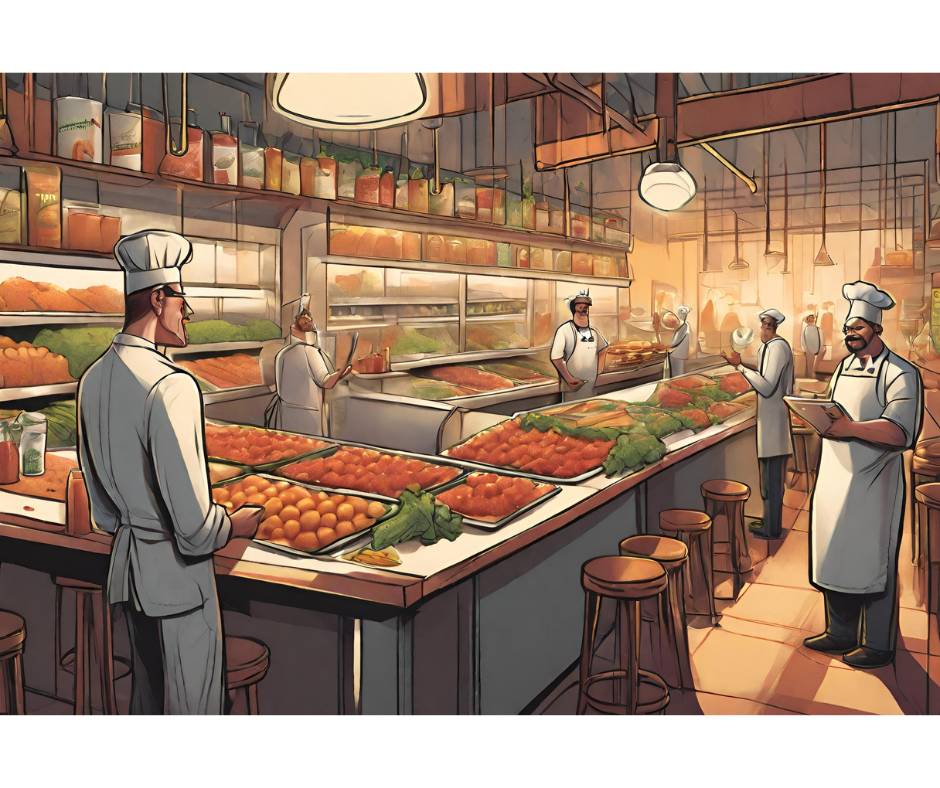Did you know that the food and beverage industry market is expected to reach $8,638.2 billion in 2025 and $11,979.9 billion in 2030? With such immense potential for growth, it’s no wonder that businesses in the F&B industry worldwide are constantly seeking innovative strategies to maximize their revenue. From small eateries to large restaurant chains, the quest for profitability is a journey filled with challenges and opportunities.
In this blog post, let’s explore actionable strategies and expert insights to unlock the full revenue-boosting potential of your F&B venture!
Menu Optimization
It’s all about making smart choices to showcase your best dishes while enticing customers to indulge in a culinary adventure. Start by identifying your star performers – the dishes customers can’t get enough of. They are your money-makers, so give them the spotlight they deserve on your menu.
Create a mouthwatering experience that leaves customers craving for more. Get creative with your menu offerings by introducing seasonal specials or chef’s recommendations that tantalize taste buds and spark curiosity.
Take inspiration from successful brands like Starbucks, which constantly updates its menu with seasonal drinks like the Pumpkin Spice Latte or Peppermint Mocha. By tapping into seasonal trends and offering limited-time promotions, Starbucks keeps customers returning for more while maximizing revenue through menu innovation.
And don’t forget the power of presentation. Use enticing descriptions and eye-catching visuals to make your dishes irresistible. With a well-optimized menu, you’ll satisfy not only your customer’s hunger but also your bottom line.
Mastering the Art of Upselling
Imagine you’re at a burger joint, and the friendly cashier suggests adding crispy bacon and melted cheese to your burger for just a small extra cost. That’s upselling! It’s about offering upgrades or extras that enhance what your customers are already getting. At the F&B industry point of sale, these suggestions can significantly boost sales while delighting your customers.
When you order a meal at McDonald’s, the cashier often asks if you’d like to “supersize” your meal or add an extra item like fries or a drink for a little more. This simple suggestion encourages customers to spend extra while enhancing their meal experience.
McDonald’s also uses strategic promotions and bundles to upsell. For example, they might offer a combo meal deal where you can get a burger, fries, and a drink for a slightly discounted price compared to ordering each item individually. This strategy entices customers to upgrade their orders to get more value for their money.
Incorporating these upselling techniques helps McDonald’s increase revenue and customer satisfaction by offering more choices and value. So, the next time you visit McDonald’s, pay attention to how they suggest additional items. Consider how you can apply similar strategies in your food business to boost sales and improve customer experience.
Loyalty Programs
F&B industry loyalty programs are like a secret recipe that keeps customers returning for more. Imagine offering rewards like discounts or free treats to say “thank you” for choosing your spot. These programs turn regular customers into your biggest fans, creating a bond that keeps them coming back again and again.
Plus, with a well-designed loyalty program, you can connect with your customers on a personal level, showing them that you care about their experience. By sending them special offers or birthday surprises, you’re adding joy to their day and making them feel like part of your family.
Take Domino’s Pizza, for example. The brand offers a mouthwatering loyalty program that keeps pizza lovers returning for more cheesy goodness. With each pizza order, customers earn points that can be redeemed for free pizzas, sides, or even desserts. It’s like getting a little slice of heaven with every purchase.
But what makes Domino’s loyalty program extra special is its innovative approach. They offer various ways to earn points, from ordering online to using their mobile app or even through social media promotions. They also keep things fun with bonus point opportunities and surprise rewards, like free pizza on your “pizza-versary.” It’s the perfect recipe for keeping customers engaged and hungry for more.
Efficient Inventory Management
With the right tools, like an inventory management platform, you can keep track of what you have in stock, what’s running low, and what you need to reorder. It helps you avoid running out of essential ingredients or ending up with too much of something that might spoil before you can use it.
It’s also about being smart with your purchases. You can cut costs and boost your bottom line by negotiating with suppliers for the best prices and consolidating orders to save on shipping. Examine your menu to identify which items are selling well and which ones aren’t. Then, adjust your ordering accordingly.
Let’s see how Chipotle Mexican Grill, a popular fast-casual restaurant chain known for its customizable burritos, bowls, and tacos, deals with their inventory management. Chipotle’s unique system revolves around its commitment to using fresh, high-quality ingredients.
One notable aspect of Chipotle’s inventory management strategy is its emphasis on sourcing ingredients locally whenever possible. By partnering with regional suppliers and farmers, Chipotle reduces transportation costs and ensures their ingredients are as fresh as possible. This approach not only enhances the taste and quality of their food but also minimizes waste by reducing long-distance shipping and storage.
Furthermore, Chipotle utilizes a “prep sheet” system to streamline operations and optimize inventory levels at each restaurant. Each day, managers receive a prep sheet outlining the precise quantities of ingredients needed based on forecasted sales. This system allows them to prepare enough ingredients to meet demand without overstocking or wasting food.
Maximizing revenue in the F&B industry requires a strategic approach and a willingness to adjust to changing market dynamics. So go ahead, put these strategies into action, and watch your profits soar.

